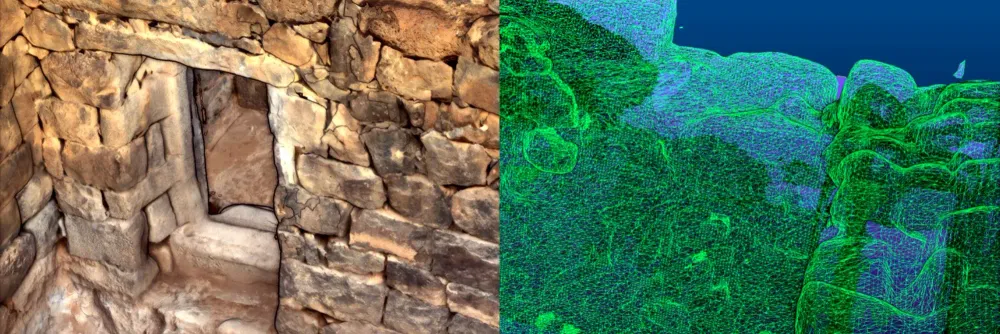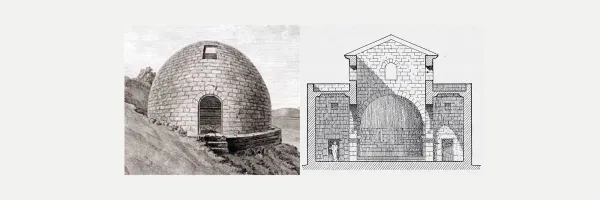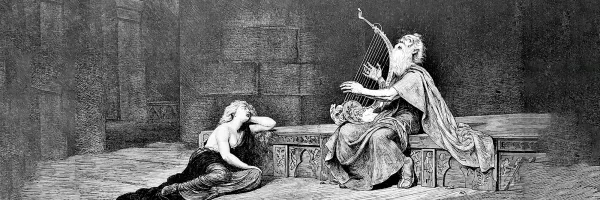Digital Archaeology and World Heritage in Jordan: Reflections from ICHAJ 16, Athens
Last week I had the privilege of presenting at the International Conference on the History and Archaeology of Jordan (ICHAJ 16) in Athens. This conference is one of the most important gatherings for anyone working on Jordan's rich history and heritage. Scholars, archaeologists, heritage professionals, and students come together to share new discoveries and approaches, and it was an honor to represent the Umm Al-Jimal Archaeological Project (UJAP) at such an event.
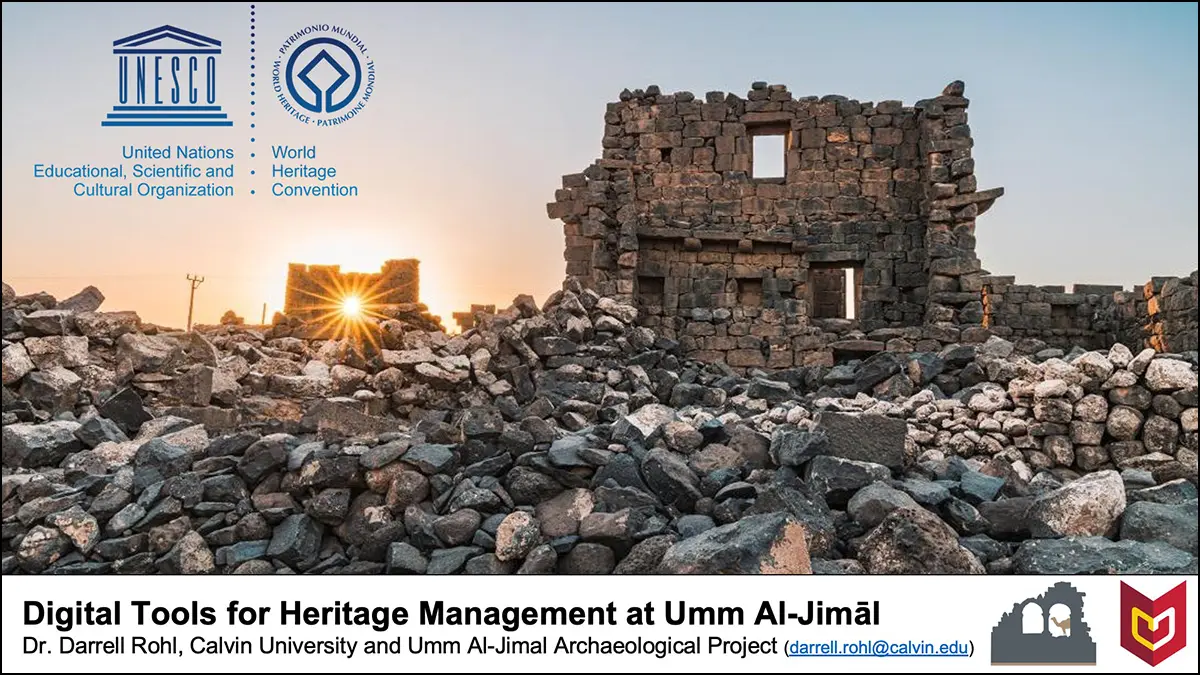
My presentation focused on the ways we are using digital tools to support the protection and management of Umm Al-Jimal, Jordan's newest UNESCO World Heritage Site and the focus of my 2024-25 sabbatical year and Fulbright U.S. Scholar Award. While my original research plans had to be adapted this past year, the result has been an even more compelling story of innovation and resilience.
Why Umm Al-Jimal Matters
Umm Al-Jimal isn't just a few isolated monuments—it's a preserved entire town, giving us a rare detailed glimpse into ancient daily life.
For those who may not know it, Umm Al-Jimal is a remarkable archaeological site in northern Jordan. Unlike many ancient sites that highlight just a single temple, palace, or church, Umm Al-Jimal preserves an entire late antique and Byzantine town. More than 170 buildings remain standing, including at least 16 churches, extensive domestic spaces, inscriptions in Nabataean, Greek, Latin, and Arabic, and a sophisticated water system.
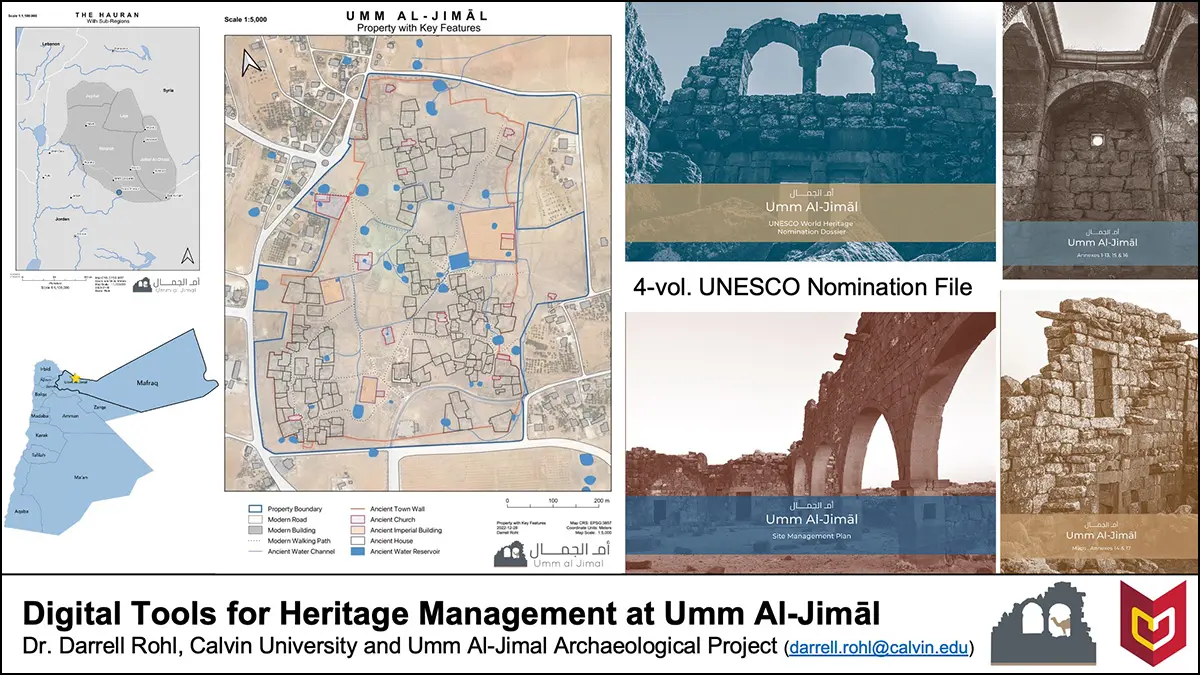
This makes Umm Al-Jimal unique: it gives us a window into everyday life in the ancient world—how people lived, worshipped, worked, and interacted as a community. That's why the site was inscribed on the UNESCO World Heritage List in 2024, and why protecting it matters not just for Jordan, but for the world.
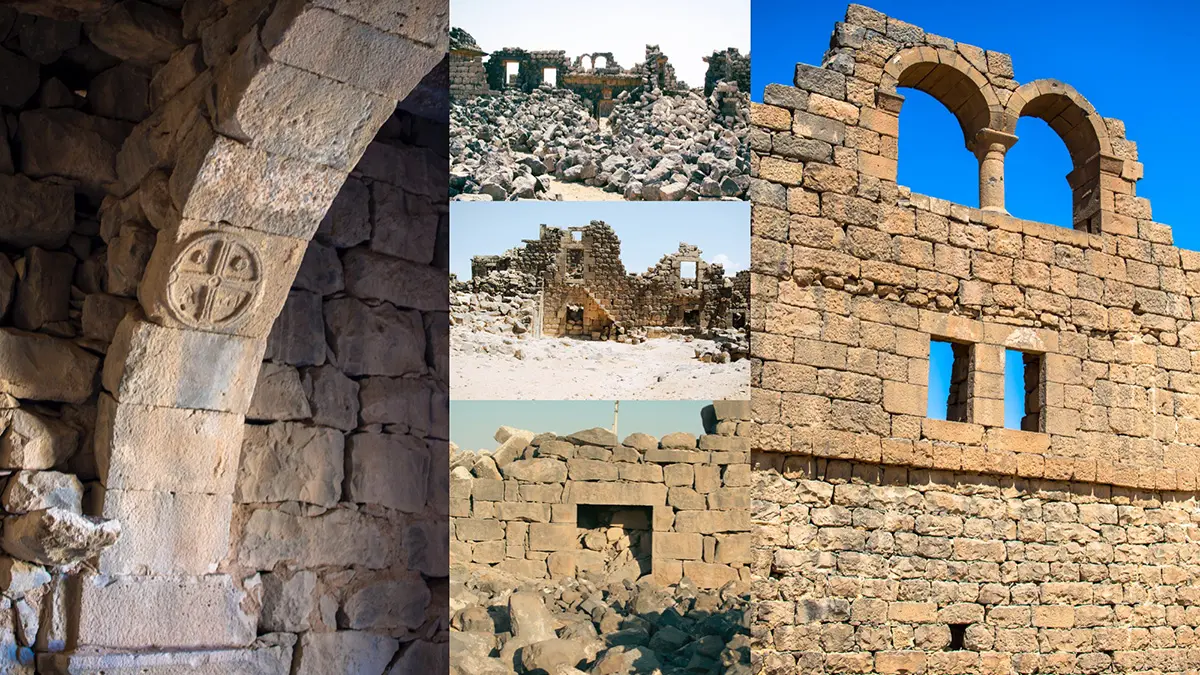
Challenges and Adaptations
My research this year didn't unfold exactly as I had planned. Unexpected health issues (a retinal detachment and required emergency surgeries), bureaucratic delays, and regional conflict meant that some of the ambitious 3D scanning goals had to be scaled back. But archaeology often requires adaptation—and sometimes those shifts open up new opportunities.
Instead of focusing on a single technology, I presented what I call three digital threads, each contributing in different ways to the sustainable management of Umm Al-Jimal.
Three Digital Threads
Digital tools like 3D scanning, graph databases, and AI are helping us to protect Jordan's newest World Heritage Site.
1. 3D Scanning: Capturing the Site in Detail
We have begun detailed ground-based LiDAR scanning of select buildings, like the West Church. These scans produce precise digital models that serve as a baseline for measuring change over time—whether from erosion, earthquakes, or human impact.
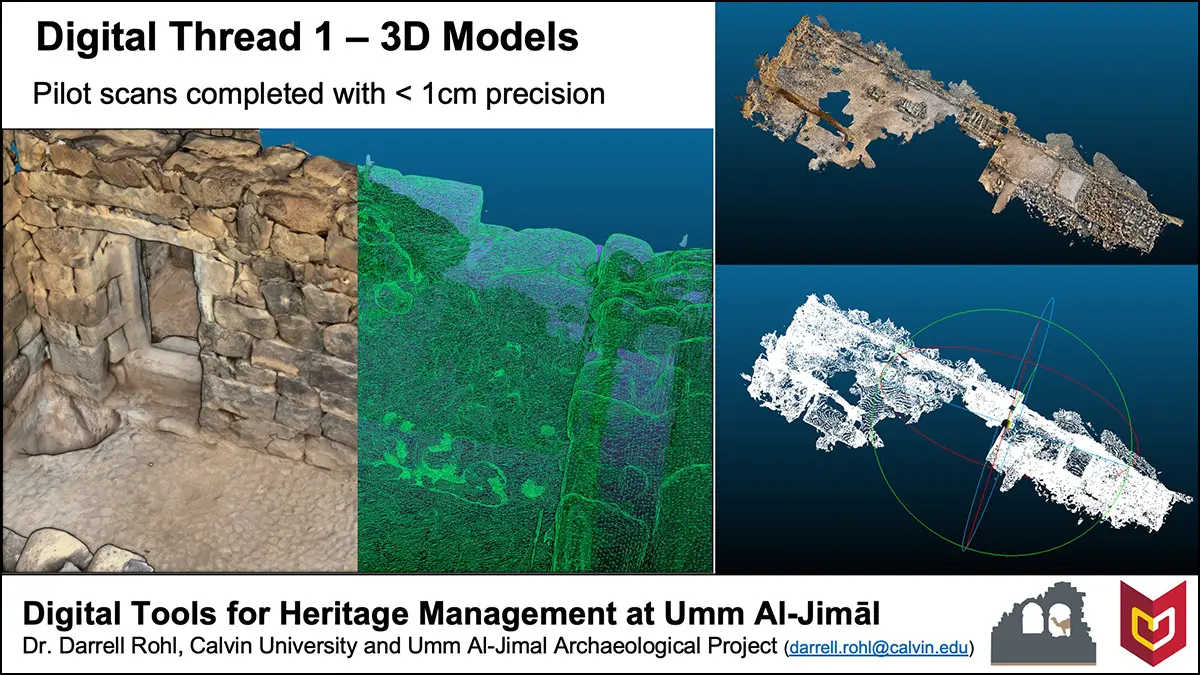
This work may sound highly technical, but the goal is simple: ensure that future generations can still experience these remarkable structures, whether in person or digitally.
2. Database Development: Connecting the Pieces
Managing a World Heritage Site isn't just about the stones and buildings—it's about the vast network of data tied to them: excavation records, photographs, architectural plans, inscriptions, conservation reports, and more.
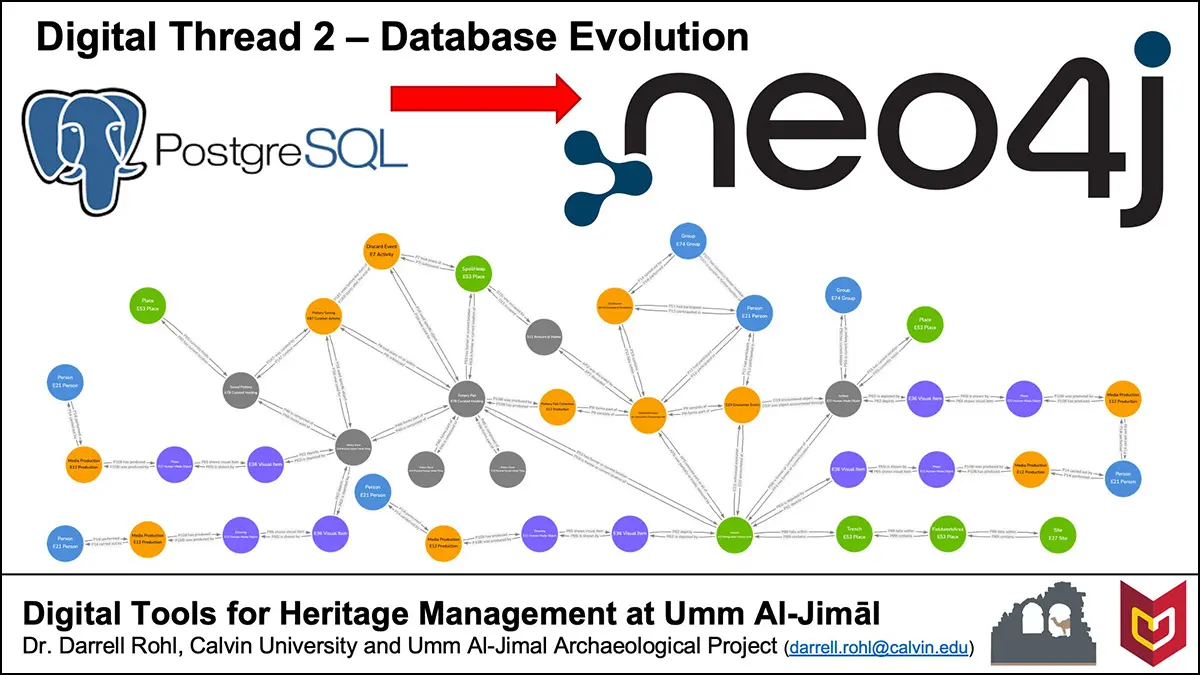
Our team has been building a graph database in Neo4j, aligned with international heritage standards (e.g., the CIDOC-CRM). This approach allows us to connect data in flexible, meaningful ways: not just "object X was found in trench Y," but also "object X is related to inscription Z and was documented by person A in 1975."
When completed, this database will be the backbone for long-term heritage management. It ensures that scholars, heritage professionals, and local community partners can access, understand, and build on decades of work.
3. Artificial Intelligence: Classifying the Landscape
The third digital thread comes from collaboration with GIS graduate students at California State University, Long Beach. Using machine learning and aerial imagery, students trained models to automatically identify rubble, buildings, water reservoirs, and looters' pits across and beyond the site.
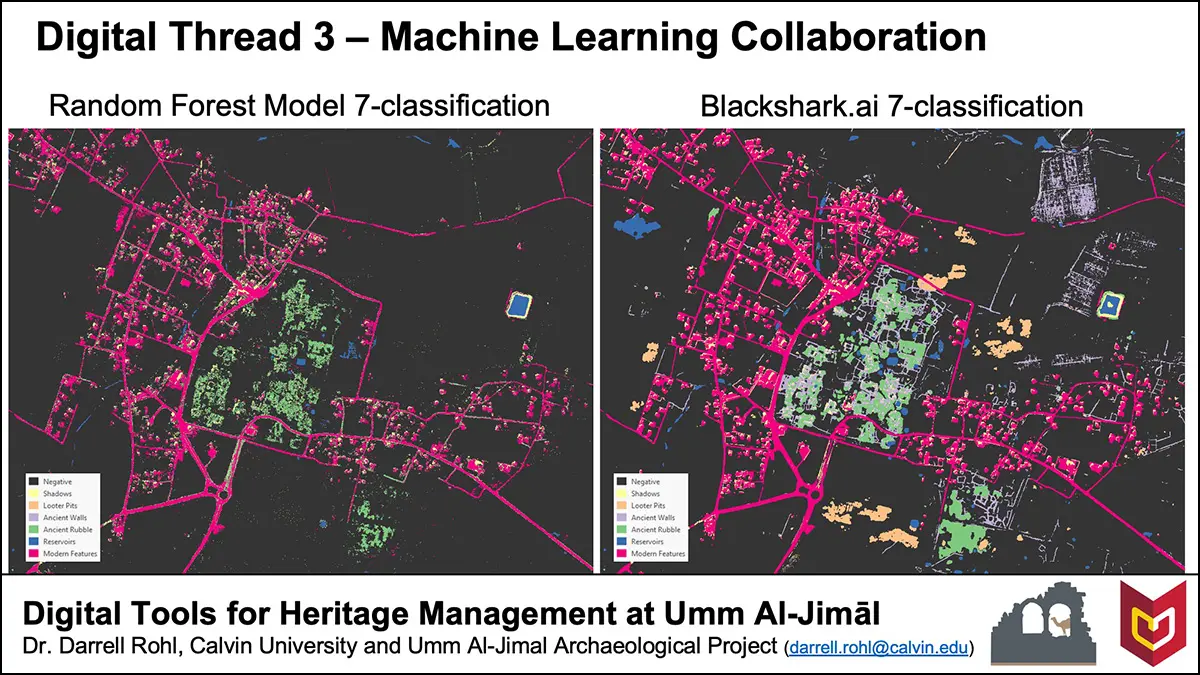
The results are encouraging: AI can help us classify structures, flag potential risks, and provide scalable tools for monitoring change. This doesn't replace human expertise, but it augments our ability to manage a sprawling site with limited resources.
Looking Forward
These three digital threads—3D scanning, graph databases, and AI classification—are not isolated experiments. Over the next year or two, we aim to weave them together into a comprehensive digital heritage system for Umm Al-Jimal.
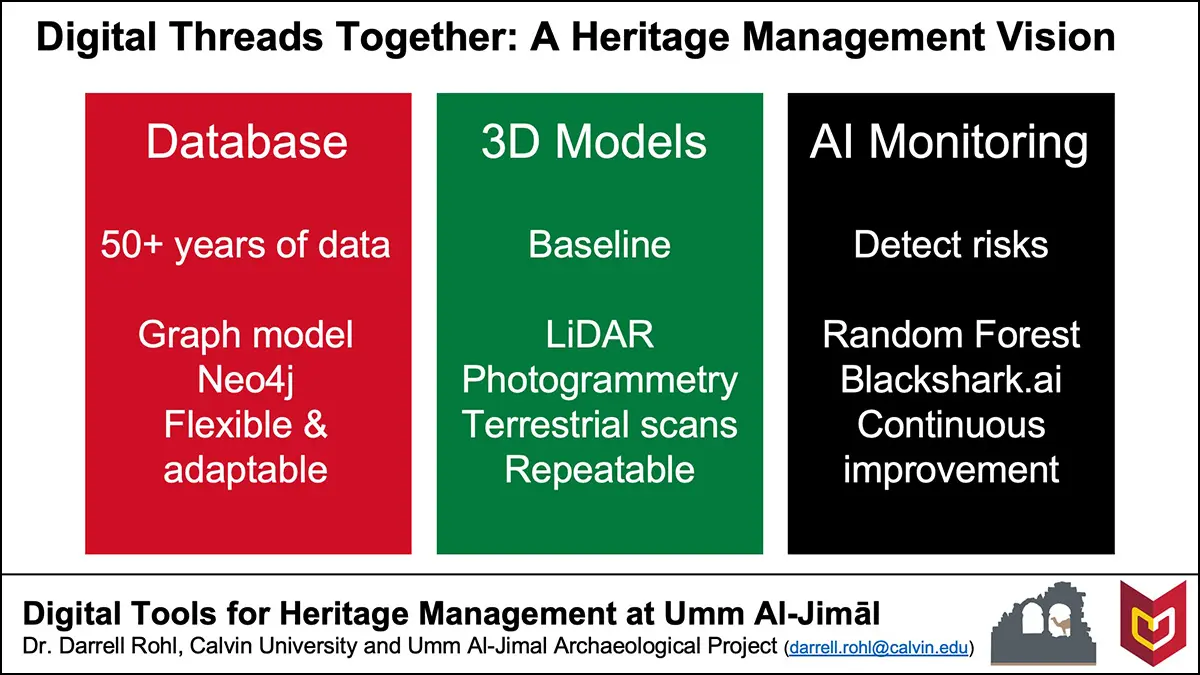
Heritage management only works through true partnership rooted in local stewardship.
This system will support not only academic research but also the Jordanian Department of Antiquities, the Umm Al-Jimal Municipality, and the local community, who are the ultimate stewards of the site.
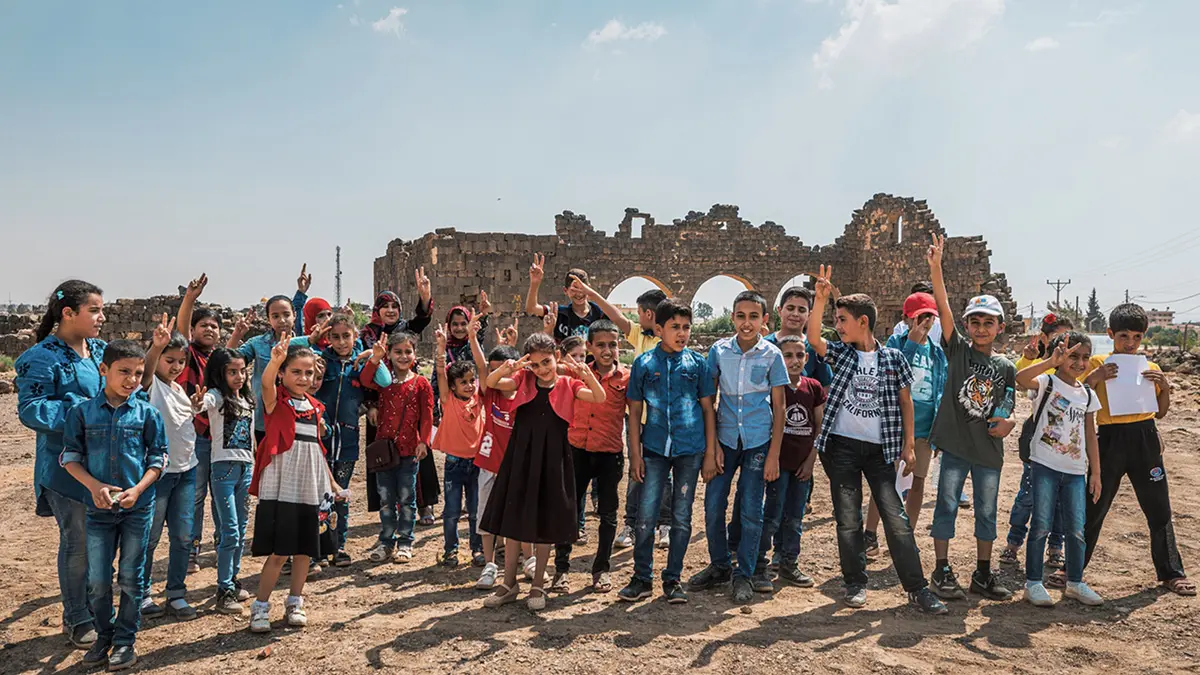
Heritage management only works if it's rooted in local partnership. Digital tools are powerful, but they must serve the people who live with and care for the site every day.
Closing Reflections
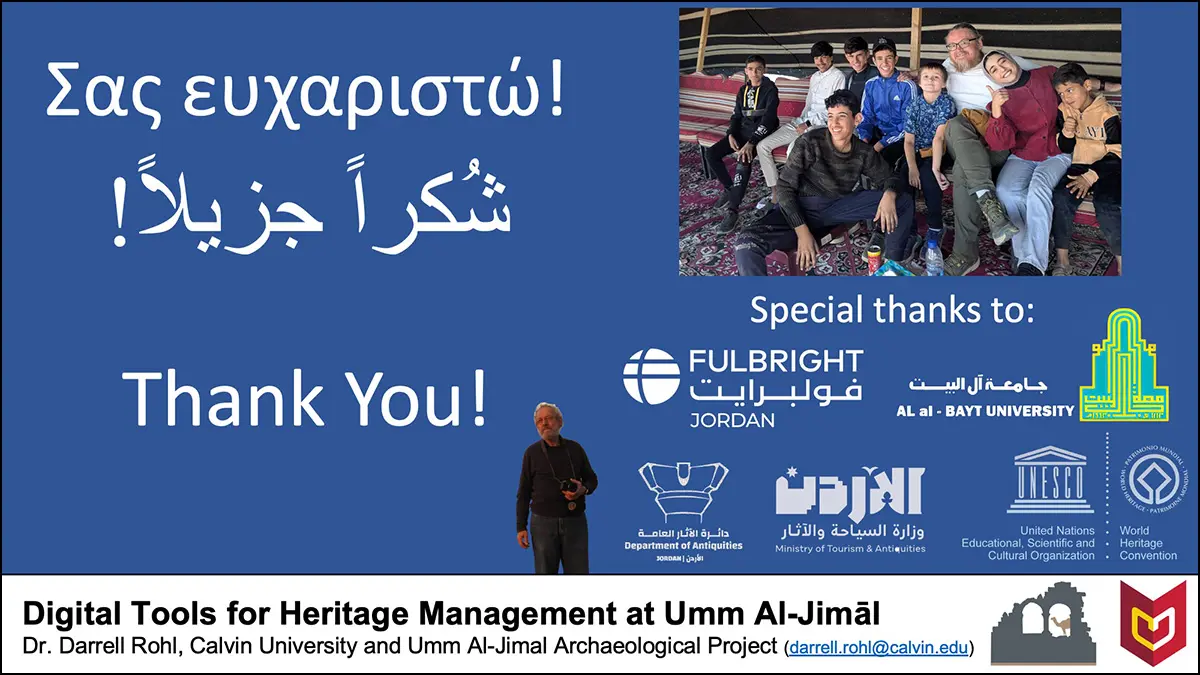
Presenting this work at ICHAJ 16 was both a professional honor and a personal milestone. Athens provided a fitting backdrop: a city where ancient ruins and modern life intersect in complex, often contested ways.
Umm Al-Jimal faces its own challenges, but I believe our work demonstrates that digital archaeology has the potential to protect, interpret, and sustain heritage in ways that are both innovative and collaborative.
This conference talk was just the beginning of the conversation. In the months ahead, I'll be sharing more about these projects, our partnerships, and the stories that connect the Past, the Present, People, and Place.


